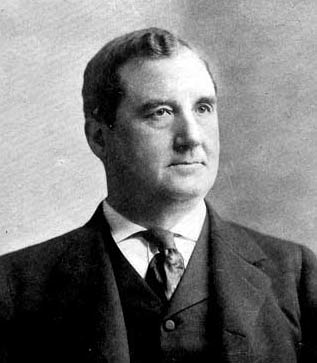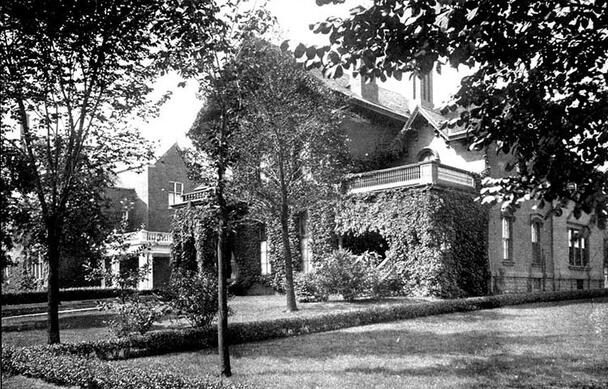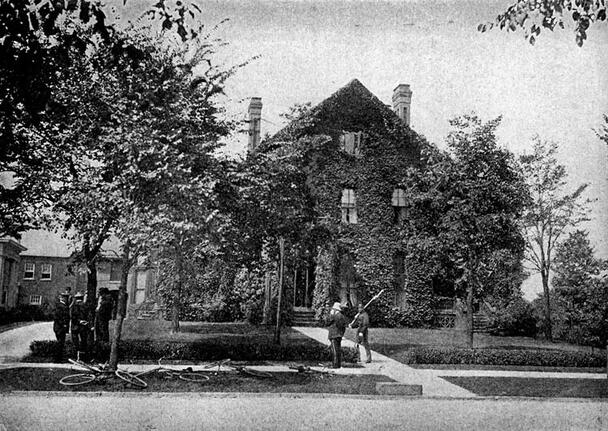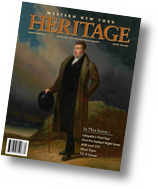John G. Milburn was not born to a wealthy lifestyle in 1851 in Newcastle-on-Tyne, England. His father was an engineer who built bridges and urged his son to follow that profession. Eighteen-year-old John demurred and when his sister-in-law in Batavia, New York, urged him to emigrate to America, he did so. He studied law in the Batavia offices of Wakeman & Watson, and also taught school for a short time.
In 1874, was admitted to the bar (by exception because he was not yet a citizen). The next year the tall, handsome, intelligent and impeccably groomed young man married Mary Patty Stocking, a teacher at Bryan's Seminary. She, the daughter of a farmer from Pike in Wyoming County, apparently encouraged Milburn to pursue his legal studies.
The young couple moved to Buffalo in 1876 where Milburn practiced law alone for several years until joining Sherman Rogers and Franklin Locke, becoming a partner. He made a very postiive impression on local lawyers for his excellent legal preparation, his polished public speaking style, and his warm personality.
In 1888, the Milburns purchased the home at 1168 Delaware Avenue. It had been built in 1861 for George C. Vaughan. Over the next twenty-seven years, it was owned by Edward Darley, Erastus Scoville, Esther Osborn, George Chadeayne, and Edward Eames. The Milburns moved in with their two sons, Devereux age 8, and John Jr, age 7. A third son, Ralph, would be born that year. They began remodeling the home to meet their family and entertaining needs.
The Milburns became popular socially, and John Milburn became a successful lawyer. Milburn and his wife, Patty, were early enthusiasts for establishing kindergartens in Buffalo. John Milburn served as president of the Buffalo Free Kindergarden Association for most of his years in Buffalo. The Milburns entertained prominent Americans as well as international celebrities such as Matthew Arnold, who exclaimed after visiting, "Here are two people who know the art of living!"
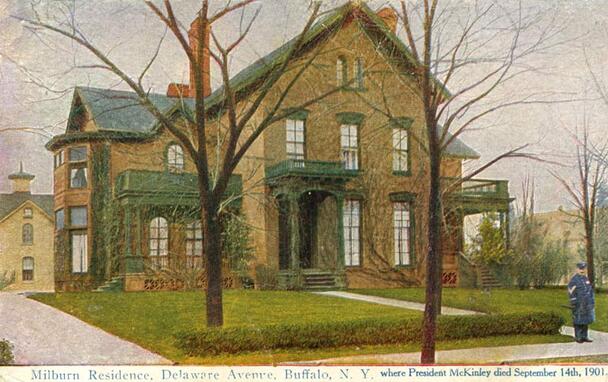
It was not surprising that the Board of Directors of the newly created Pan American Exposition Company chose Milburn to be its president in 1899. In 1900, the Milburns remodeled their home again in expectation of entertaining national and international figures duirng the Exposition. Both side porches were converted into wings and a small porch over the front entrance was removed.
When plans were finalized for President McKinley and his wife to visit the Exposition, the Milburns were prepared to host them at their home. They provided a suite of rooms on the second floor along the north side (right hand above) of the house to their special guests. In the front room, facing the street, was a small sitting room decorated in purple and gray velours with draped walls. The bedroom was 18 x 20 feet large, with north-facing windows and a large marble fireplace. It featured a brass and gold bedstead with a worked counterpane, a chiffonier, dresser, and divan. The walls were tapestried. A third room in the suite was a bedroom also.
The McKinleys arrived in Buffalo on September 5, 1901, named "President's Day at the Exposition," and stayed the night with the Milburns. The next day, after a morning in Niagara Falls, President McKinley went to the Temple of Music on the Exposition grounds for a reception while Mrs. McKinley returned to the Milburn home to rest. The President was shot by anarchist Leon Czolgosz shortly after 4 p.m. and, after an operation in the Exposition's hospital, was brought to the Milburn house. The Milburns became host to many more people suddenly as McKinley relatives arrived, in addition to the President's doctor and several local nurses. The Milburns vacated the house, lodging elsewhere for the duration. The four household servants were quickly exhausted by providing chauffering, housekeeping and meals at all hours, and staff from neighboring homes were lent to help provide service. On September 14, at 2:15 a.m., President William McKinley died. The house quickly became a funeral home of sorts, as friends arrived continuously to pay their respects. Look here for details of the funeral.
By midday on September 16, the Milburn house was restored to its owners, after the President's casket was carried out, and thirty carriages removed the relatives and government officials. After they left, workers removed big oxygen tanks that had been brought to ease the President's breathing and large electric fans that were kept running in the President's room during the very hot weather that month.
The Buffalo Evening News said, "Then the place was left to the curious ones and to the police." For a period after, Buffalo police patrolled the sidewalk in front of the house in an attempt to keep away souvenir hunters who chipped stone and brick from the house, and cut branches from the lilac bushes and other vegetation.
The Milburns remained in Buffalo until 1904, when John G. Milburn became partner in the New York City firm of Carter and Ledyard. His renown and fortune increased commensurately after the family moved to New York. After 26 years in law practice with Carter, Ledyard & Milburn, Milburn died on a visit to London in 1930; he was 79. His wife Patty had died three weeks earlier. Despite his many achievements, every news story about John G.Milburn included mention of the fact that President McKinley had died in his home in Buffalo. Son Devereux distinguished himself at Harvard, drove ambulance for the French before the United States joined World War 1, and then was commissioned as an artillery officer. But, in addition to following his father into a legal career, Devereux Milburn is rememebered as possibly the best polo player this country ever produced. His brother, John Jr. also pursued a law career. Youngest brother Ralph appears to have been the exception, pursuing no professional career.
The house at 1168 once again went through a succession of owners. Phillip M. Shannon purchased the house from the Milburns for his residence. He rearranged the interior somewhat. On January 10, 1907, fire severely damaged the house, ruining the room in which President McKinley died. Daughter Hazel Shannon was alone in the house with a guest when the fire began. The combined effects of fire and firefighting left only the dining room relatively unspoiled.
The house was restored and in November 1919, Mrs. Shannon converted the house into apartments, constructing an addition and converting the McKinley bedroom into a living room of one apartment. The apartments were let to a discriminating class of renters.
In 1928, Conrad Wettlaufer purchased the property and further remodeled it, making eight apartments in all. The Jesuit community of Canisius High School, located next door to the Milburn property, purchased it in 1948 and moved into the apartments, which from that time forward became a cloistered building.
Then in 1957, Canisius High School announced plans to demolish the 96 year old structure, no longer having a use for it and desirous of additional space on its campus. The demolition occured as soon as the contracts were let.
To mark the site of the house, the Buffalo Historical Society (now known as The Buffalo History Museum) placed a marker along the curb.
